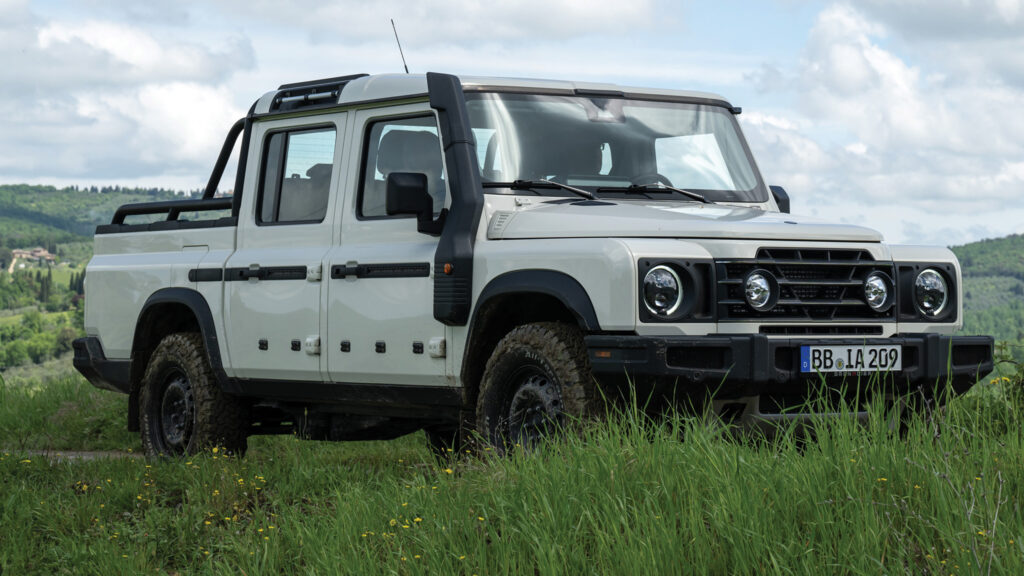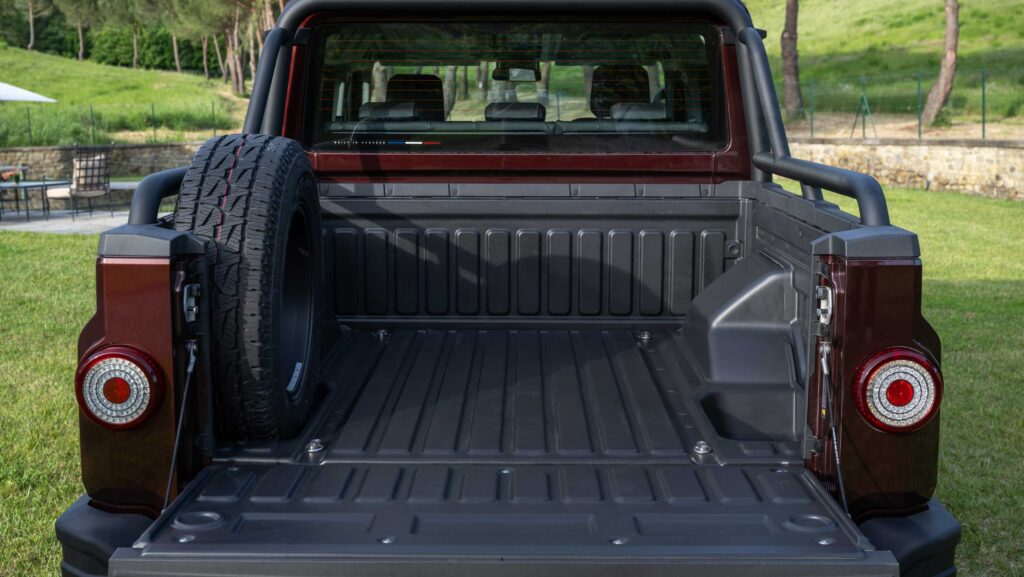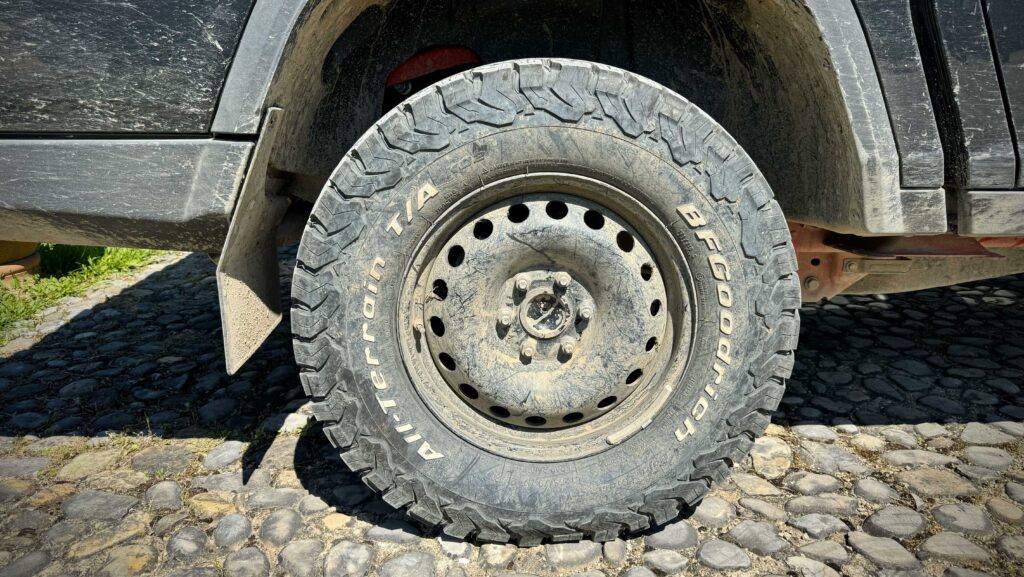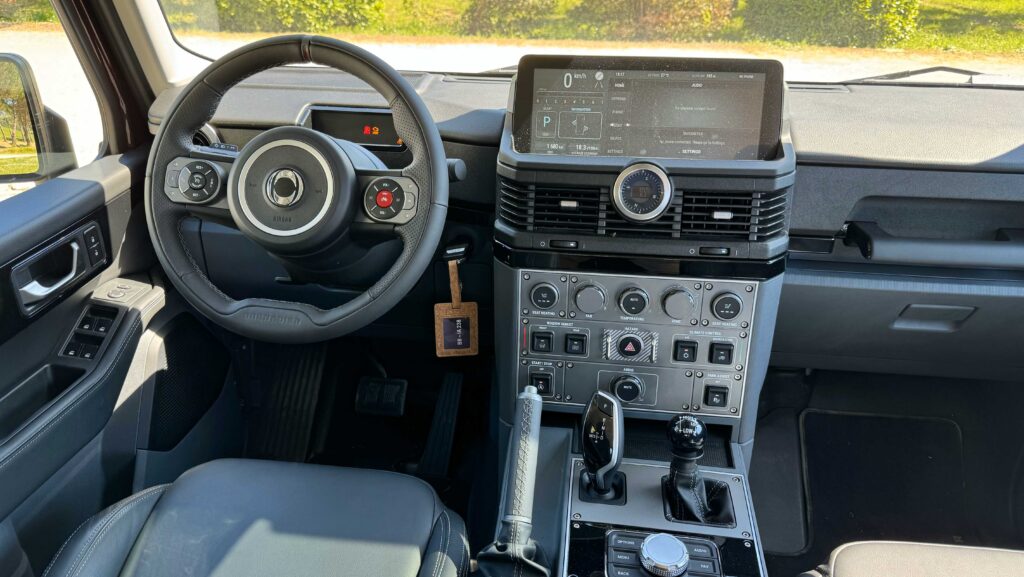On test: Ineos Automotive’s debut 247hp Quartermaster pickup
 Ineos Grenadier Quartermaster © Ineos Automotive
Ineos Grenadier Quartermaster © Ineos Automotive Ineos has built what could be the toughest mainstream pickup on the market, but simple, solid engineering comes at a cost.
With its snorting straight-six diesel, creamy eight-speed gearbox, and rock-solid steel girders underneath, Ineos Automotive’s debut five-seat double cab has seemingly got the lot.
Starting from scratch with the Grenadier Station Wagon, on which this pickup is based, gave its engineers free licence to cherry-pick components sweet shop-style and, inevitably, they’ve gone for the top shelf – BMW, ZF, Bosch, Carraro, et al.
That indulgence has resulted in the Quartermaster sporting some of the best hardware on the market.
Sadly, juicy engines and gobstopper-tough metalwork don’t come cheap, leaving would-be buyers of this French-built off-roader staring at an Arc de Triomphe-sized financial hurdle.
See also: On test: Ineos’s £79,000 Grenadier 4×4
Prices kick off a whisker over £66,000, and it’ll take Range Rover money – circa £85k – for the keys to the Fieldmaster-spec model we tested.
Unfortunately, those figures bite harder because of one crucial factor – payload.
The diesel model’s load bed is rated to bear a paltry 760kg (835kg on the petrol, thanks to a slightly lighter powertrain), so it falls well short of the arbitrary 1,000kg minimum for full-blown commercial vehicle classification.
In short, farmers won’t be able to reclaim VAT of at least £11,000. Ouch.
So, you’re going to need deep pockets – or an exceptionally savvy accountant – to bag a Quartermaster.
No surprise, then, that Ineos has rowed back on its initial intention to build utilitarian 4x4s primarily as working tools; well-heeled “leisure” buyers are now the primary target.
Long-term potential
Anyone unwilling to spend tractor money on a truck will have to wait patiently for these vehicles to drip onto the second-hand market.
At five years old they should be a sound bet, with mercifully few electric motors and sensors to fail (though test models weren’t without fault), and, if the underpinnings are anything to go by, a life expectancy akin to the Toyota Land Cruiser.
By then, the original owners will have likely grown sick of the wayward steering and already swallowed a hefty amount of the depreciation.
The rigid box-section chassis, for one, should still be in fine fettle. Pencil-thick in places, electrochemically treated, cavity waxed and painted – with a 12-year anti-perforation warranty to boot – it should handle far more abuse than a modern, lightweight monocoque.
Learnings from the old Land Rover Defender, from which designers took plenty of inspiration, have also been applied to the doors, fenders and the like, all of which are formed from tinworm-resistant galvanised aluminium.
Suspension is kept simple, with progressive, long-travel coil springs and telescopic dampers getting the nod over airbags.
There’s no faulting their endeavours in keeping rubber pinned to terra firma, which takes the sting out of the meanest off-road hollows.
Opting for Bosch’s unorthodox hydraulically assisted “recirculating ball” steering is handy here, as it copes better with extreme articulation without snatching the steering wheel from the driver’s hand.
However, it’s a savage handicap on the road. It’s painfully low-geared, slightly numb and has as much play as an old Massey 135 with sloppy track rods.
Keeping it running straight and true is like nailing jelly to the ceiling. Constant corrections are a necessity, even on arrow-straight A-roads, and this ceaseless wheel wiggling soon becomes onerous.
Cornering is also a chore, in part because of the arm-aching gearing and, more significantly, due to its dogged reluctance to self-centre. It all feels rather archaic.
To accommodate the load bed, Ineos has also extended the wheelbase by 305mm compared with the Station Wagon (it’s 50cm longer overall). That has pushed the turning circle to an oafish 14.5m.

© Ineos Automotive
Capable drivetrain
Few such problems in the powertrain department, though, where owners can enjoy plenty of poke and a throaty note.
BMW’s revered and reliable 3-litre, twin-turbo straight-six diesel has been tuned specifically for Ineos 4x4s to ensure there’s heaps of low-end torque, and it keeps on coming as the revs rise.
Acceleration is reasonable given it’s a circa 2.8t garden shed, but it’s thirsty work. Ineos quotes 23.3-25.9mpg; we averaged 19mpg during a mix of farm tracks and twisty A-roads.
The engine is married to ZF’s eight-speed automatic gearbox and the two toil in choir-like harmony, the latter shuttling up and down the ratios almost imperceptibly.
They also provide effective engine braking, with the transmission sticking doggedly in gear while the engine howls on downhill schleps to minimise the effort required from the Brembo callipers.
Full-time four-wheel drive sees power funnelled through a two-speed transfer case with built-in locking central differential.
Selecting high and low range, and yoking the drive to the front and rear axles, is the business of a stubby, mechanical stick, which can take a bit of cajoling to home it in the target gate.
It’s a proper throwback design and makes for an odd, sausages-and-custard pairing with the comparatively modern BMW transmission shifter also on the centre console.
Off-road performance can be improved by opting for the £2,370 “rough pack” on the standard model, which adds electrically engaged front and rear diff locks and BFGoodrich All-Terrain KO2 tyres in place of the less knobbly Bridgestone Duelers.
This kit is standard on Trialmaster and Fieldmaster editions, with prices for these starting about £7,500 higher.

© MAG/Oliver Mark
Back to basics
The interior is unlike anything else on the market – Grenadier Station Wagon aside.
Abundant ground clearance (264mm), and a lack of side steps, means forcefully flinging oneself into the Recaro seat. But its figure-hugging curves immediately hold bodies in place.
Grab handles are chunky and rubber footwell trim is standard, complete with drain valves that allow for an agricultural wash-out (switches are IP water and pressure rated – though who would have the minerals to test them?).
The key even slots into a conventional barrel.
It’s less luxurious than a modern Defender – in some ways, even a Ranger Wildtrak – and the fat-finger-friendly switchgear has a slightly cheap feel that belies the Quartermaster’s list price, but the finish is generally tidy and, bar a bit of under-seat vibration, the ride is comfortable and surprisingly quiet.
However, there’s less room than its exterior size would suggest.
Headroom is ample, legroom less so – particularly for those in the back; the cabin has been shortened by 70mm versus the Station Wagon – and the biggest piece of furniture, the centre console, eats space.
Its girth could almost be measured in feet rather than inches, which keeps the driver and passenger parted in their own little booths and saves them jostling for the central elbow perch.
Storage space is slightly sub par, and the rear door pockets can only be accessed when the doors are open, which seems an oversight.
There’s little in the way of dash clutter, with only a warning icon display behind the steering wheel and everything else – from engine revs and speed to tyre pressures and altitude – stuffed in the central 12.3in screen.

© MAG/Oliver Mark
Towing and carrying
Small wheel arches make the plastic-lined load bed useful, if it didn’t have to harbour the full-size spare wheel.
The aforementioned carrying capacity is an expensive issue, but in practice is more likely to impact builders carting aggregates than farmers loading bags of sheep feed.
Good points include a full-width, easy-to-close tailgate, which can support a 225kg load when opened.
The “utility belt” along the sides of the vehicle can be used to attach extra stuff, which might be handy if you can find an inventive way of using it.
There’s also the option of speccing a covered socket next to roof rails. This is wired into one of the overhead switches and ideal for fitting spotlights.
Farmers Weekly verdict
Cor blimey… £85,000 (as tested) seems an awful lot of money for a pickup.
It’s perfect in so many ways – big engine, slick transmission, simple body-on-frame underpinnings – but it’s almost impossible not to get freaked out by the price.
Even the base-speccer will come in north of £70k once a few modest extras have been added.
So, unless you’re sitting flush with cash – unlikely given current agricultural circumstances – bookmark this article, leave someone else to eat the depreciation, and revisit it in five years’ time.
Likes and gripes
Likes
- Solid underpinnings
- Torquey engine
- Slick transmission
- Good off-road suspension
Gripes
- Clumsy steering
- Poor turning circle
- Uneconomical
- Too expensive
Ineos Grenadier Quartermaster (diesel)
Engine 3-litre BMW B57 straight-six
Max power 247hp@3,250-4,200rpm
Max torque 550Nm@1,250-3,000rpm
Transmission Eight-speed ZF auto, full-time 4×4
0-62mph 9.8sec
Economy as tested 19mpg
Turning circle 14.5m
Ground clearance 264mm
Weight 2,740kg
Payload 760kg
Towing capacity 3,500kg
Starting price £66,215 standard; £73,715 for Trialmaster and Fieldmaster
Price as tested £85,201

